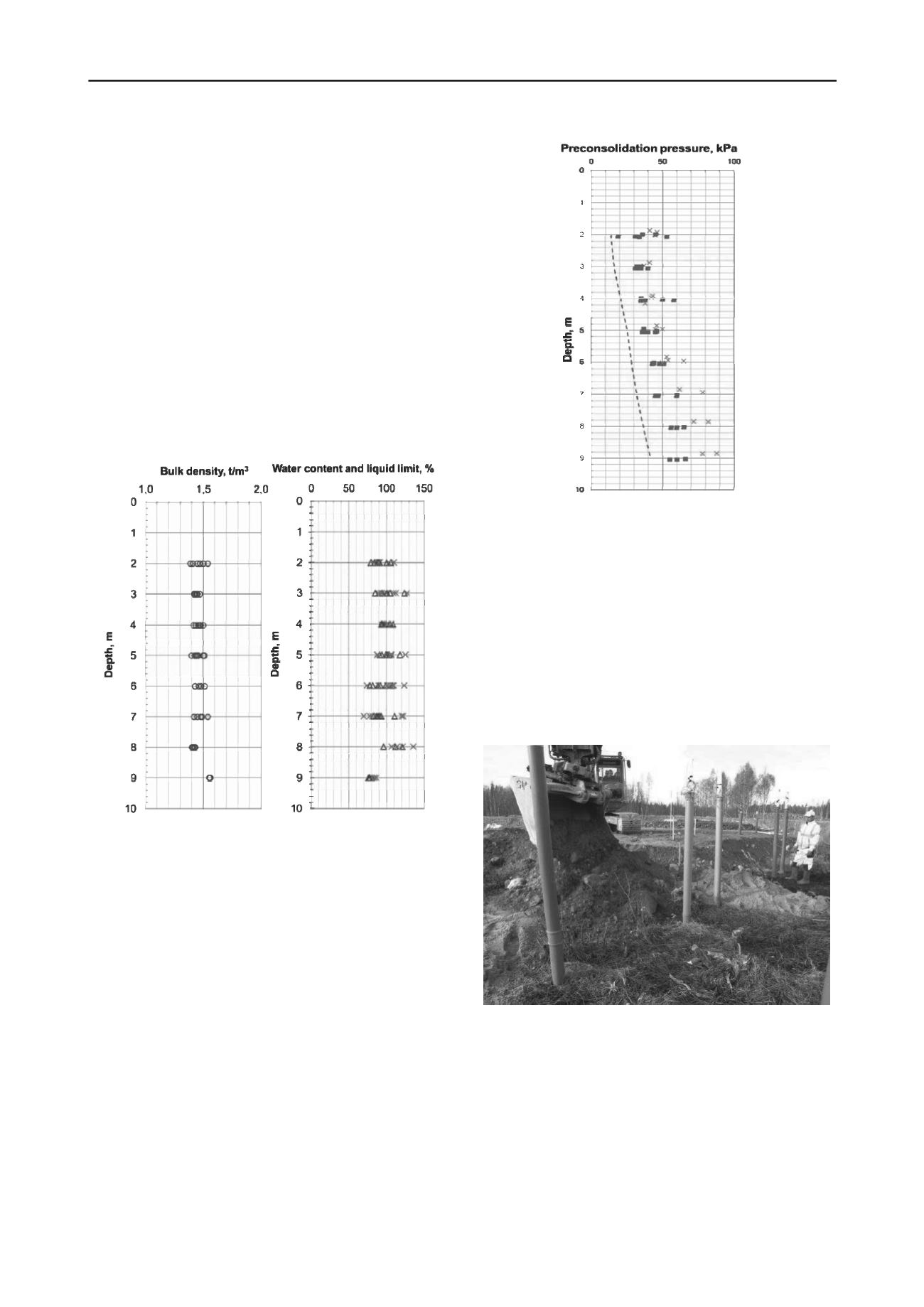
272
Proceedings of the 18
th
International Conference on Soil Mechanics and Geotechnical Engineering, Paris 2013
Proceedings of the 18
th
International Conference on Soil Mechanics and Geotechnical Engineering, Paris 2013
2 FIELD AND LABORATORY INVESTIGATIONS
Field investigations of the properties of the sulphide soil in the
test field at Lampen have been performed mainly by cone
penetration tests, field vane tests and Swedish piston sampling.
An extensive program of laboratory tests, mainly oedometer
tests, both by incremental loading and constant rate of strain,
creep tests in oedometers, permeability tests and undrained
direct simple shear tests, was conducted for the determination of
compression and strength properties. In figure 2 bulk density,
liquid limit and water content of the sulphide soil in the test
field are presented. For the sulphide soil the clay content varies
between 25-36 %, the organic content between 2.7-5.1 % of dry
weight, the iron content between 2.9-4.3 % of dry weight and
the sulphur content between 0.5-1.6 % of dry weight. The soil is
designated as organic sulphide clay. Below the test
embankments the depth of the sulphide soil is in general about
7-9 m and overlaying a moraine. At the ground surface there is
a layer of peat down to about 0.4 m overlaying a layer of about
0.6 m relatively soft dry crust of sulphide soil.
Figure 2 Bulk density, water content (triangle symbol) and liquid limit
(cross symbol) with depth in the test field at Lampen.
Evaluated preconsolidation pressures from CRS and
incremental oedometer tests conducted at approximately soil
temperature and using the evaluation methods from Sällfors
(1975) and Casagrande (1936) respectively are presented in
figure 3. In the upper part of the soil profile, the two tests give
about the same results, and in the lower part the incremental
loading tests give higher values of preconsolidation pressure.
There is a significant overconsolidation with respect to the
current in situ stresses in the whole soil profile, figure 3.
Figure 3 Preconsolidation pressures at the test field at Lampen evaluated
from CRS oedometer tests (square symbol) and incremental oedometer
tests (cross symbol), and estimated effective vertical in situ stresses
(dotted line) with depth.
3 TEST EMBANKMENTS AND INSTRUMENTATION
Two test embankments with square bases of 30x30m
2
, one with
the final height 2.0 m (embankment 1), and the other with 1.5 m
height (embankment 2) have been constructed the year 2010 up
to 1.5 m, and raised 2011 to 2.0 m (embankment 1), figures 4-6.
A fine-grained moraine, with an average compacted bulk
density of 2.0 t/m
3
, was used as construction material for the
embankments, leading to pressures of about 40 kPa and 30 kPa
from the two embankments respectively.
Figure 4 Cautious construction of embankment around the measuring
equipment.


